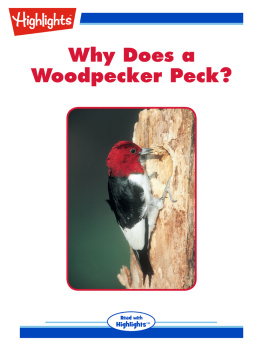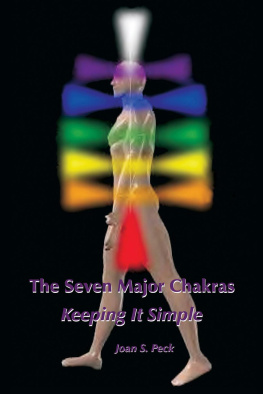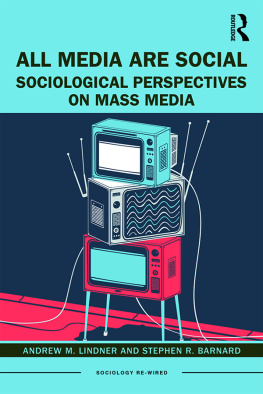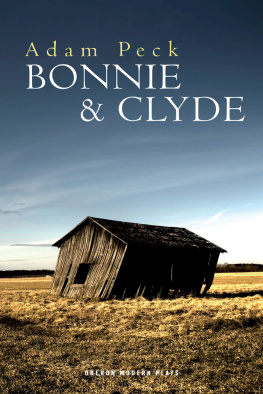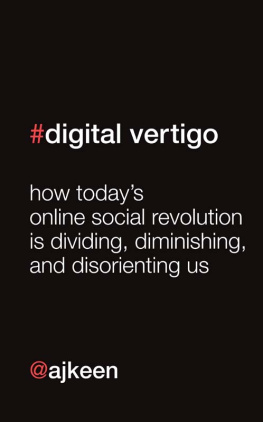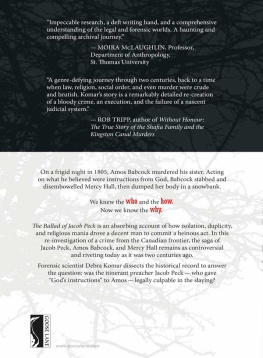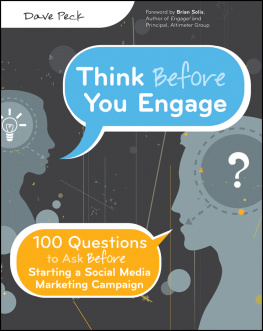Andrew Peck - Folklore and Social Media
Here you can read online Andrew Peck - Folklore and Social Media full text of the book (entire story) in english for free. Download pdf and epub, get meaning, cover and reviews about this ebook. publisher: Utah State University Press, genre: Politics. Description of the work, (preface) as well as reviews are available. Best literature library LitArk.com created for fans of good reading and offers a wide selection of genres:
Romance novel
Science fiction
Adventure
Detective
Science
History
Home and family
Prose
Art
Politics
Computer
Non-fiction
Religion
Business
Children
Humor
Choose a favorite category and find really read worthwhile books. Enjoy immersion in the world of imagination, feel the emotions of the characters or learn something new for yourself, make an fascinating discovery.

- Book:Folklore and Social Media
- Author:
- Publisher:Utah State University Press
- Genre:
- Rating:4 / 5
- Favourites:Add to favourites
- Your mark:
- 80
- 1
- 2
- 3
- 4
- 5
Folklore and Social Media: summary, description and annotation
We offer to read an annotation, description, summary or preface (depends on what the author of the book "Folklore and Social Media" wrote himself). If you haven't found the necessary information about the book — write in the comments, we will try to find it.
Folklore and Social Media — read online for free the complete book (whole text) full work
Below is the text of the book, divided by pages. System saving the place of the last page read, allows you to conveniently read the book "Folklore and Social Media" online for free, without having to search again every time where you left off. Put a bookmark, and you can go to the page where you finished reading at any time.
Font size:
Interval:
Bookmark:
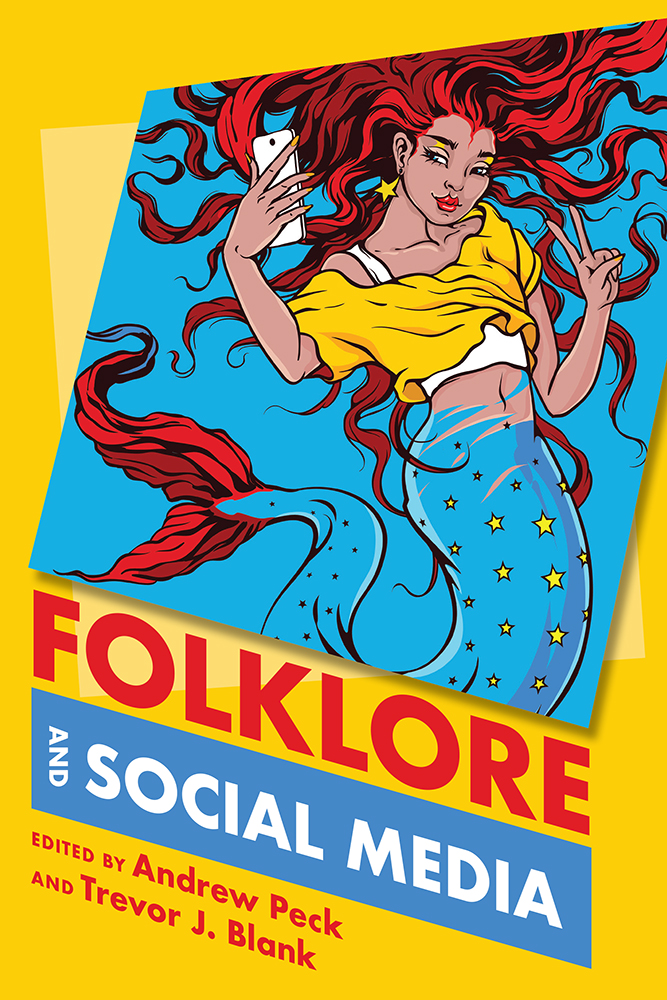
Edited by
Andrew Peck and Trevor J. Blank
U TAH S TATE U NIVERSITY P RESS
Logan
2020 by University Press of Colorado
Published by Utah State University Press
An imprint of University Press of Colorado
245 Century Circle, Suite 202
Louisville, Colorado 80027
All rights reserved
 The University Press of Colorado is a proud member ofthe Association of University Presses.
The University Press of Colorado is a proud member ofthe Association of University Presses.
The University Press of Colorado is a cooperative publishing enterprise supported, in part, by Adams State University, Colorado State University, Fort Lewis College, Metropolitan State University of Denver, Regis University, University of Colorado, University of Northern Colorado, University of Wyoming, Utah State University, and Western Colorado University.
ISBN: 978-1-64642-058-2 (paperback)
ISBN: 978-1-64642-059-9 (ebook)
https://doi.org/10.7330/9781646420599
Library of Congress Cataloging-in-Publication Data
Names: Blank, Trevor J., editor. | Peck, Andrew, 1985 editor.
Title: Folklore and social media / edited by Andrew Peck & Trevor J. Blank.
Description: Louisville : University Press of Colorado, [2020] | Includes bibliographical references and index.
Identifiers: LCCN 2020028068 (print) | LCCN 2020028069 (ebook) | ISBN 9781646420582 (paperback) | ISBN 9781646420599 (ebook)
Subjects: LCSH: Folklore and the Internet. | Communication in folklore. | Social media. | Digital media.
Classification: LCC GR44.E43 F64 2020 (print) | LCC GR44.E43 (ebook) | DDC 398.20285dc23
LC record available at https://lccn.loc.gov/2020028068
LC ebook record available at https://lccn.loc.gov/2020028069
Cover illustration latenter/Shutterstock.
To Robert Glenn Howard
Andrew Peck
Sheila Bock
Timothy R. Tangherlini, Vwani Roychowdhury, and Peter M. Broadwell
Whitney Phillips and Ryan M. Milner
Andrew Peck
Liisi Laineste
Jeana Jorgensen and Linda J. Lee
Kristiana Willsey
Tok Thompson
Lynne S. McNeill
John Laudun
Elizabeth Tucker
Bill Ellis
F IRST AND FOREMOST, WE WOULD LIKE TO THANK the editorial and production staff at Utah State University Press and the University Press of Colorado, especially Rachael Levay for her diligent work and guidance in bringing this volume together. We would also like to thank our reviewers for their excellent feedback, which was instrumental in honing this volume for publication. Additionally, we would like to recognize the hard work and insightful scholarship of our contributors, without whom this volume would not have been possible.
We would also like to thank our friends and colleagues for their moral support and advice throughout this process. Specifically, we would like to thank Tracy Cox, Jim Donahue, Kathleen German, Ashley Hinck, Robert Glenn Howard, Mike Jadlos, Andrea Kitta, Rosemary Pennington, Casey Schmitt, Chris Strebendt, and Jeff Tolbert.
Finally, we would like to offer special thanks to our families: to Nicky Kurtzweil for her keen copyediting eye and brilliant editorial insight and to Angelina, Louis, and Elliott Blank for their love and support.
Andrew Peck
G AYLE K ING STOPPED LAUGHING AND TURNED SERIOUS. W ITH gravitas, the CBS This Morning news anchor relayed an important and timely warning to her viewers. With Halloween only a few weeks away, police in states ranging from Pennsylvania to Washington and Colorado were urging parents to check their childrens trick-or-treat bags for tainted candy. The danger, the report suggested, came in the form of marijuana-laced candy, which was barely distinguishable in taste from an unadulterated treat. After a short pretaped segment featuring video from the Denver Police Department and interviews with a local family and a doctor, the camera returned to the studio, where King quipped, Remember when you were little you just wanted to avoid the house that had the apple and the raisins. Now... an apple or raisin seems like a good thing compared to what kids have to worry about today. Thats scary (Garrand 2019).
This perennial worry about contaminated Halloween candy should be familiar to any folklorist. Kings off-the-cuff recollection was based on oral legends about Halloween candy being tampered with that were prevalent during her youth in the 1950s and 60s and have received mass media attention for almost as long (Grider 1984, 131133). In the 1980s, Sylvia Grider observed the role media played in propagating and reinforcing this legend, writing that such reports pass quickly into oral tradition and thus reinforce the syndrome (133). Even though the phenomenonwhich Grider calls Razor Blades in the Apples Syndromehas its nebulous roots in oral tradition, the mediation of the phenomenon demonstrates an ongoing reciprocal relationship between institutional agents, mass media, and folk practice.
Worries about marijuana-laced candy in 2019 exhibited all these traits with one important additionthe panic started because of a post on social media. A few days before the report on CBSs morning news program, the police department in a small town in Pennsylvania seized various THC-laced edibles while executing a search warrant. Although there was no evidence that the owner had planned to give them out to children on Halloween, the police departmentlikely inspired by similar existing legendsposted pictures and a PSA to Facebook, advising parents to be ever vigilant in checking their childrens candy before allowing them to consume those treats (Dickson 2019). Although many commenters mocked this post by suggesting naivet on the part of police (e.g., No one is giving away their weed to your kids. Shits expensive and youre trying to scare people), the story received coverage from a variety of local news outlets that took the warning seriously. A few days later, these local reports were picked up by national news media, and worrying about the dangers of marijuana-laced candy became a national news item. From there, just as Grider suggests, the reports (as well as the rumors they inspired) found their way back onto social networks, feeding further vernacular expression (this time much more sincere) and reinforcing the syndrome.
For scholars of digital media and folklore, this example may be unsurprising. After all, the internets role as a conduit for folk practice has been well documented by a variety of scholarship over the last several decades. Early work on internet folklore by scholars like John Dorst (1990), Robert Glenn Howard (1997, 2005), Barbara Kirshenblatt-Gimblett (1998), Bill Ellis (2001, 2002), Giselinde Kuipers (2002, 2005), Lajos Csaszi (2003), Jan Fernback (2003), Jeannie Banks Thomas (2003, 158170), Russel Frank (2004), Alan Dundes (2005), Rosemary Hathaway (2005), Marjorie Kibby (2005), and Trevor J. Blank (2007) often looked at how pre-digital folk practices, like joke cycles or chain letters, were being extended and changed by the affordances of this new digital medium. Taken as a whole, this scholarship suggested that not only did folklore exist on the internet but also that digital media represented both an opportunity and a challenge for the future of folkloristics. Digital networks, Alan Dundes argued, were helping folklore flourish through increased transmission (2005, 405); but at the same time, as Barbara Kirshenblatt-Gimblett (1998) noted, this new form of digital transmission complicated our basic understanding of folk groups and their practices.
Next pageFont size:
Interval:
Bookmark:
Similar books «Folklore and Social Media»
Look at similar books to Folklore and Social Media. We have selected literature similar in name and meaning in the hope of providing readers with more options to find new, interesting, not yet read works.
Discussion, reviews of the book Folklore and Social Media and just readers' own opinions. Leave your comments, write what you think about the work, its meaning or the main characters. Specify what exactly you liked and what you didn't like, and why you think so.

